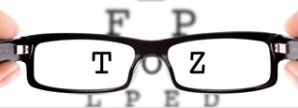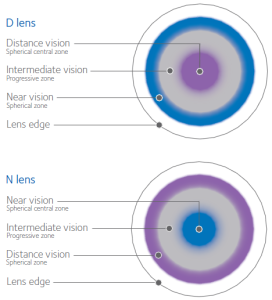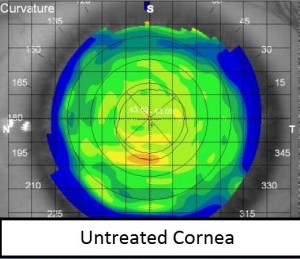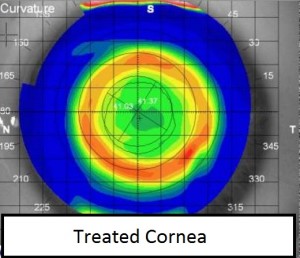
“Why do my child’s eyes keep getting worse every year and is there a way to stop it?”
It’s a question we are often asked and it’s a perfectly reasonable concern…
Nearsightedness or myopia progression is on the rise in the US. Studies from the 1970’s showed that 25% of the country was nearsighted but by 2010 that number had ballooned up to 42%!! That’s an increase of 66%!! Additionally, the total amounts of nearsightedness had also dramatically increased!
Considering the effect of high myopia on learning, quality of vision, as well as a substantially increased risk of Glaucoma and Retinal Detachments – it seems logical to consider how to stop it.
Today on Eye to the Future, we will look at Myopia. What is actually happening? What causes it? And what can we do to slow myopia progression?
What is Actually Happening in Myopia?
Nearsightedness or Myopia is simply put, long eyeballs. It’s really nothing more exotic than that.
In nearsighted individuals, the eye grows axially or front-to-back. This growth primarily occurs because of something called peripheral defocus.
 Since the eye grows front-to-back, the whole eye isn’t growing, just the parts around the outside of the eye in the peripheral retina. If light entering the eye doesn’t fall properly on this part of the retina (shown left), it stimulates the eye to grow backwards to focus the light. Unfortunately, this growth causes the light falling in the center part of vision to be out of focus resulting in fuzzy distance vision.
Since the eye grows front-to-back, the whole eye isn’t growing, just the parts around the outside of the eye in the peripheral retina. If light entering the eye doesn’t fall properly on this part of the retina (shown left), it stimulates the eye to grow backwards to focus the light. Unfortunately, this growth causes the light falling in the center part of vision to be out of focus resulting in fuzzy distance vision.
Not surprisingly, eyes tend to grow most as the rest of the body does, leading to faster nearsighted progression during childhood, adolescence, and puberty.
What Causes the Eye to Grow?
Now there is the million dollar question. There really isn’t a single cause. Genetics play a very large role, but the bigger thought is that the increase in near tasks may be the main driver.
The reason is that when we focus our eyes to see things up close, the amount of peripheral defocus explained above increases causing a greater likelihood of myopia developing. This would certainly explain why nearsightedness has increased so strongly in the past several decades as the youth have given up playing outside for computers, iPads, and cell phones.
Now parents, before you confiscate Timmy’s DS, it’s important to note that peripheral defocus increases with ALL up close tasks. A 2010 survey study out of China looked at myopia development with education level and showed that myopia was present in 32% of elementary students but increased in over 80% of college graduates!! Books may make you smart but they may also make you nearsighted…
What Can be Done to Stop Myopia Progression?
The answer is simple, stop peripheral defocus, the implementation of that however, is more difficult. In the past many things have been tried.
Making kids go play outside more, wearing hard contact lenses, under correcting children in glasses, even giving kids bifocals – all these have largely been discredited or are difficult to study effectively.
So what does work?
Atropine
The best proven way of stopping myopia progression, is with atropine. Atropine is a very strong dilating drop that temporary paralyzes the eyes focusing muscle which stops peripheral defocus.
Strong atropine has been shown in studies to cut down on the progression of myopia by 81%!!
While this certainly works, staying dilated throughout the entirety of your childhood is… less than ideal. Recently, researchers have been experimenting with heavily diluted atropine which works almost as well.
Orthokeratology
A newer advancement in the fight against myopia progression is Orthokeratology (Ortho-K). This method uses large, hard contact lenses that children wear at night to reshape the surface of the eye so no glasses or contacts are needed throughout the day. Think of it like a retainer for your eyes or even temporary LASIK.
One of the surprise benefits of Ortho-K is that this technique drastically reduces the amount of peripheral defocus. Because only some of the cornea is molded, light is focused more evenly on the inside of the eye (seen above).
In controlled studies, Ortho-K reduces the progression of myopia by 50%!
The downside of Ortho-K is that it is very expensive, vision often fluctuates as the cornea “molds back” through the day, and children have to wear lenses overnight which increases the risk of infection.
Bifocal Contact Lenses
 The newest, and most exciting advancement in myopia progression control is through the use of Bifocal Contact Lenses. Click here for more about bifocal contact lenses.
The newest, and most exciting advancement in myopia progression control is through the use of Bifocal Contact Lenses. Click here for more about bifocal contact lenses.
The short of how this works is that bifocal contact lenses have different focusing rings that allows people going through the curse-of-the-40’s to see up close again.
For kiddos, the ring design, similar to OrthoK, reduces the amount of peripheral defocus and has also been shown to cut nearsightedness progression in half!
The benefits here is that bifocal contact lenses are readily available, inexpensive, worn only during the day, and will correct for distance vision just like any other contact lens! Cool stuff!
I hope you have enjoyed this detailed explanation of Myopia and what current research says about controlling it’s progression.
If your child is experiencing drastic changes in their myopia from year to year, I highly recommend to speak with your optometrist about ways to slow this awful progression.
If you have any questions or comments, feel free to contact me at drwolf@precisionfamilyeyecare.com.
Take care of those eyeballs!
- Nick Wolf, OD




